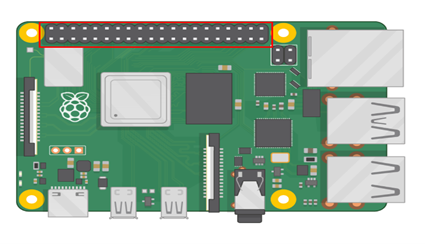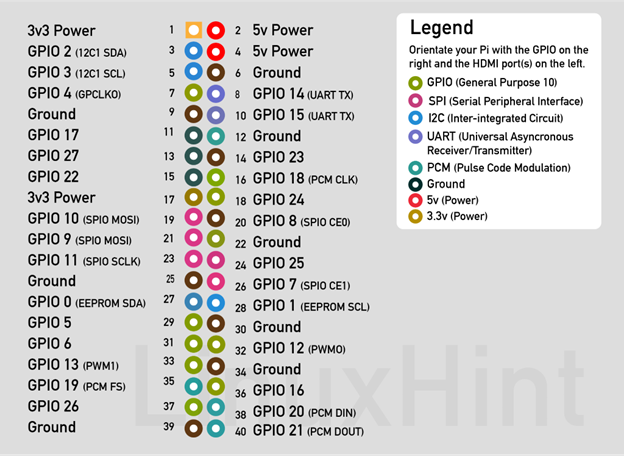Specifications of Raspberry Pi 3 B+
The Raspberry Pi foundation claims the Pi 3 B+ is much faster than its predecessor as it comes with a 64-bit quad core processor having a speed of 1.4 GHz and a SDRAM of 1GB. To further dig deeper into its specifications there is a table below that states the specifications of Raspberry Pi 3B+.
| Specifications | Raspberry Pi 3B+ |
| Processor | 64-bit quad core 1GHz ARM A53 |
| RAM | 1 GB |
| Connectivity | Bluetooth 4.2, 2.4GHz and 5GHzWireless/LAN |
| Graphics | Video core-IV |
| Ports | 1xMini HDMI port, 1xCSI-2 camera port, 1x Micro USB power port and Micro SD card slot, 4xUSB 2.0, analogue audio and video jack, 40 GPIOs |
| GPIOs | 40 HAT compatible header pins |
Raspberry Pi 3B+ Pinout
From the specifications stated above you have gotten the idea of what this board is capable of so now jump to the pinout that will help you a lot while using Pi 3B+. Before going into the details of the pins of Raspberry Pi 3B+ there is a table below that summarizes the pins and their description for better understating.
| Pi Zero 2W pins | Representation of Pins | Pin Description |
| General purpose pins | (11-13), (15 -16), (18-19), (21-24), (26), (29), (31-33), (36,37) | These are the pins that can be used for any purpose |
| Power Pins | 1& 17 for 3.3 volts, 2 & 4 for 5 volts
(6), (14), (20), (25), (34) and (39) as GND |
To supply power to the devices connected with Pi |
| Communication pins * | (3), (5), (27), (28) for I2C
(7-11) for SPI0 (16-21) for SPI1 (8 & 10) for UART |
Pins that can be used for I2C, SPI and UART communication |
|
Pulse code modulation (PCM) Pins * |
12,35,38,40 |
These pins are used to represent the analog signals in digital form |
The order while using the communication pins should be kept in mind which is: SDA, SCL, TX, RX, SPI0 MOSI, SPI0 MISO, SPI0 SCLK, PCM DIN and PCM DOUT. *
FAQs
Q: Do All Raspberry Pi Boards Have the Same GPIOs?
Yes, all Raspberry Pi single board computers have the same set of GPIOs, but it is always instructed to see the device user manual before using it.
Q: Can you power Raspberry Pi 3+ from GPIOs?
No, there is no way you can power up the Pi 3 B+ as the GPIOs pin can only deliver power for the peripherals attached to it
Q: How do I Power my Raspberry Pi 3B+?
To power the Pi 3 B+ you need to have a power supply that can deliver 5v and 2.5 Amps at the output, connect the power supply to the micro-USB port of the Pi 3 B+
Conclusion
Before getting started with any board of Raspberry Pi there are two things that one should keep in mind one its specification and other is its pinout. Raspberry Pi 3B+ like other boards have the 40 GPIOs which are further separated based on their functionality.


